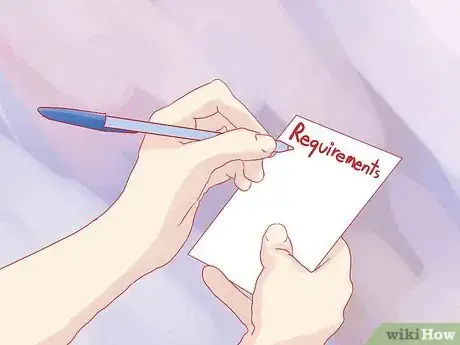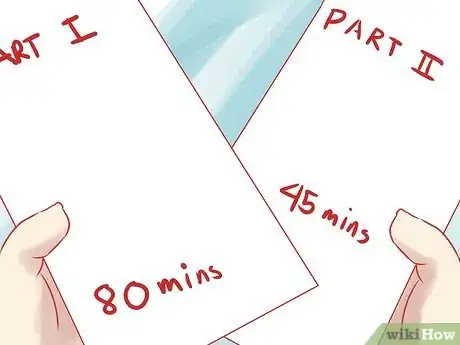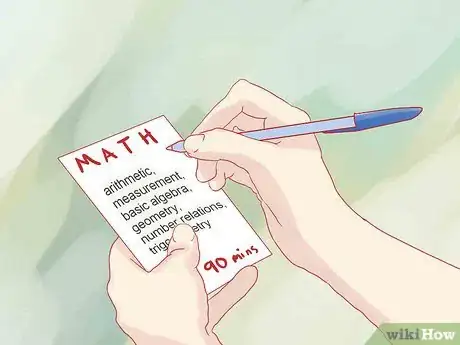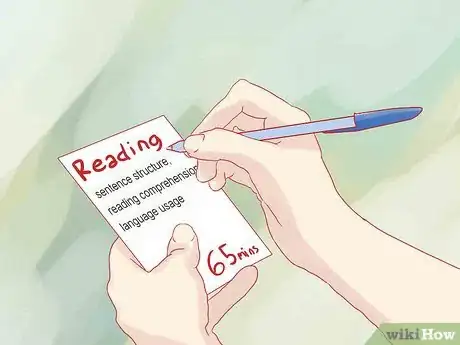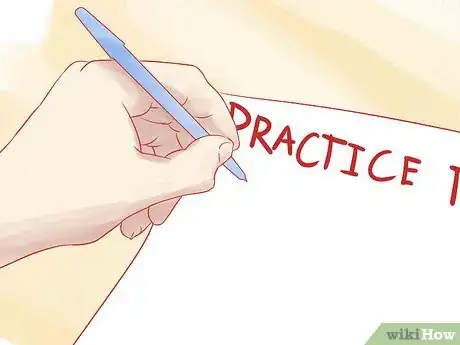This article was co-authored by Alexander Ruiz, M.Ed.. Alexander Ruiz is an Educational Consultant and the Educational Director of Link Educational Institute, a tutoring business based in Claremont, California that provides customizable educational plans, subject and test prep tutoring, and college application consulting. With over a decade and a half of experience in the education industry, Alexander coaches students to increase their self-awareness and emotional intelligence while achieving skills and the goal of achieving skills and higher education. He holds a BA in Psychology from Florida International University and an MA in Education from Georgia Southern University.
wikiHow marks an article as reader-approved once it receives enough positive feedback. This article has 25 testimonials from our readers, earning it our reader-approved status.
This article has been viewed 352,936 times.
The GED, which stands for General Educational Development, is a test developed by the American Council on Education (ACE)[1] that determines whether you have knowledge comparable to that of a high school graduate. The GED is accepted at the majority of colleges, technical schools and employers as equivalent to a high school degree. Read on for information about how to prepare for and take the GED.
Steps
Understand GED Basics
-
1Review your state's requirements for taking the GED. In most states you must be at least sixteen years of age and not currently enrolled in a high school. The requirements are different for every state.[2]
-
2Know what the GED entails. The GED tests your knowledge in four subject areas:[3] language arts (reading and writing), mathematics, social studies and history, and science.
- The language arts section is composed of three parts.The first section tests your skills in grammar, word usage, spelling and capitalization, and the second section is a written essay in response to a prompt or question. The reading portion tests sentence structure, reading comprehension and language usage.
- The mathematics section covers arithmetic, measurement, basic algebra, geometry, number relations, trigonometry and data analysis of charts and graphs. It is also split into two parts.
- The social studies portion includes geography, civics and government and economics.
- The science section tests life science, physical science and earth science.
Advertisement -
3Know how long you have to take each subject test. The GED is taken over the course of 7 hours and 45 minutes. Depending on which testing center you choose, you may be able to divide the test into parts taken on separate days, rather than sitting for the entire test at once.
- The first writing section contains 50 questions to be answered in 80 minutes, and the second writing section gives 45 minutes to plan, write and edit an essay.
- Each mathematics section contains 50 questions to be answered in 90 minutes.
- The social studies component contains 50 questions in 70 minutes.
- The science portion of the test contains 50 questions to be answered in 80 minutes.
- The reading portion of the test contains 40 questions to be answered in 65 minutes.
-
4Understand the scoring system. The scores for each subject test range from 200 to 800. In order to pass the test, you must have a total score of at least 2250, and you must score at least 410 in each individual subject area.
Prepare to Take the GED
-
1Start studying. Several months you plan to take the GED, begin studying for the test using a GED preparation book or online resources.
- Begin by taking a practice test. This will show you which areas you should target for further studying.
-
2Retain good study habits. That is the main key to GED success. Every day at the same time, sit down at the same place and study hard!
- Studying with flashcards might be a good idea, especially if you're a visual learner. Flashcards will allow you to use your kinesthetic learning when writing out the information while also using visual learning when reading the cards and auditory learning by repeating the information out loud.
- Creating a study schedule will help you memorize and understand more concepts. If you tend to study without discipline, give scheduling a try, since studying more consistently will probably yield better results.
-
3Consider getting outside help. Most communities have adult education programs that are often connected to finding employment or entering a certification program or college.
- GED preparation courses are available at many community colleges and literacy centers. They provide tips on how to study for the test, more information on what to expect, and additional practice tests. Search http://www.acenet.edu/resources/GED/center_locator.cfm to find preparation courses in your area.
- If it isn't convenient for you to sign up for a GED preparation class in person, consider taking one online.
-
4Develop a test-taking strategy. It's not easy to concentrate for over seven hours straight. It's important to strategize ways to get through the test before you walk into the testing center.
- Practice, practice, practice. Get used to the feeling of sitting down and taking the tests while you time yourself.
- Talk with people who have taken the GED about what to expect, and ask them for tips.
- Most importantly, be prepared. If you've studied for each subject test and done well during your practice tests, you'll be just fine on testing day.
Take the GED
-
1Sign up for a test. Find a local GED testing center and sign up for a time that is available to you.[4]
- The GED must be taken at a testing center in person. It is not available online.
- Make sure that you give yourself enough time to adequately prepare for the test. You may want to schedule the test several months in advance.
- In some cases you can pre-register online or download forms to print, fill out and mail in.
- If you have special needs, be sure to indicate that on your registration form. Your needs will be accommodated by your testing center.
-
2Take the test. Arrive promptly on testing day and use the techniques you practiced to take the complete test.
- If you arranged to take the test on several different days, make sure you complete each portion of the test.
- Follow the test administrator's instructions closely so you don't disqualify yourself from taking the test that day.
-
3Receive your score. Every testing center handles giving out scores differently. In some cases you may have to contact the testing center to receive your score, and in other cases it may be sent to you.
-
4Take the test again. If you didn't pass, you may take the test again after a specified waiting period. Check your state's requirements and ask your testing center when you may schedule a second test time.[5]
Community Q&A
-
QuestionCan I get into any university with a GED?
 LeahlovesGodTop AnswererIt depends on the university. Your GED certificate is the equivalent to a high school diploma. If you have great marks on all your GED test, it may be enough to get you into university. If your grades are average, you may need to either retake certain GED tests to get better marks, or, the university may have a different test for you to take.
LeahlovesGodTop AnswererIt depends on the university. Your GED certificate is the equivalent to a high school diploma. If you have great marks on all your GED test, it may be enough to get you into university. If your grades are average, you may need to either retake certain GED tests to get better marks, or, the university may have a different test for you to take. -
QuestionHow much will I have to pay to get a GED?
 Community AnswerYou should only have to pay for the exams which are usually $120 all together in most states.
Community AnswerYou should only have to pay for the exams which are usually $120 all together in most states. -
QuestionWhat if the person taking their GED is not fluent in written English?
 Community AnswerYou can take the exam in Spanish or any other language. Most languages likely will be provided.
Community AnswerYou can take the exam in Spanish or any other language. Most languages likely will be provided.
Warnings
- Do not attempt to take the GED test without studying first. You will be unprepared, and may be disappointed in your results.⧼thumbs_response⧽
- Remember, the GED test is currently not available online. Avoid signing up for any website that claims to offer the GED test online as these are fraudulent.⧼thumbs_response⧽
Things You'll Need
- A GED study book
- Plenty of college ruled paper
- Pencils
- A scientific calculator (Casio fx-260 solar is the official GED testing calculator)
References
About This Article
To get a GED, start by finding a local testing center and registering for the class several months in advance. Then, spend the next few months studying for each of the sections on the exam, which include math, reading, and social studies. If you need more help studying, consider taking a prep course at a community college or signing up for a class online. On the day of the test, arrive on time and closely follow the instructor’s directions to get the best possible score. For tips on developing a test-taking strategy, read on!
